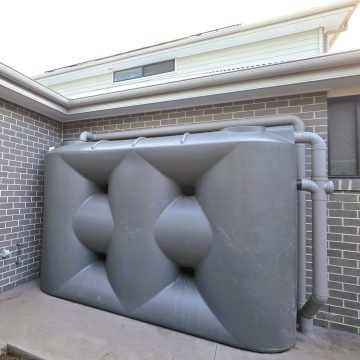Onsite stormwater detention (OSD) and retention tanks are becoming an increasingly common requirement of local governments on new developments. OSD and retention tanks assist with managing the flow of stormwater in heavy rain events. They are a valuable component of sustainable urban drainage systems and help to mitigate the impacts of stormwater runoff and reduce the risk of flooding in urban areas.
What is the difference between detention and retention?
The function of onsite stormwater detention is primarily to hold back stormwater for slow release at a later time. The controlled flow rate prevents overwhelming of drainage infrastructure during heavy rainfall events. Tanks can be configured completely as detention tanks, or they can have a retention portion at the bottom of the tank. This portion is not intended to release the water but is designed to retain it for later use, functioning like a normal water tank.
Typical configuration of OSD and retention tanks
If a tank is being solely used for detention purposes, it typically involves a standard overflow at the top of the tank plus a low-level overflow with an orifice plate near the base of the tank. This low-level overflow and orifice restrict the flow of water as it slowly discharges. If the tank is being used for both detention and retention, the additional overflow and orifice plate will be partway up the wall of the tank at a specified height. Any water below this level is retained and functions as a normal water tank. Any water above this level is detained and slowly released through the mid-level overflow.
Rotoplas can configure water tanks for OSD and retention purposes to suit local government requirements. As OSD requirements vary depending on the specific site, plans from a hydraulic engineer need to be supplied to allow for accurate quoting.

